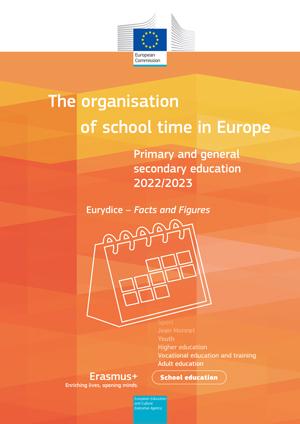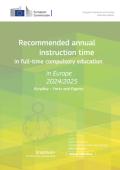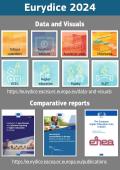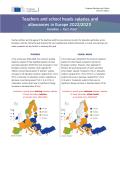The organisation of school time in Europe. Primary and general secondary education 2022/2023
This report provides information on the start of the school year and its length, as well as the timing and length of school holidays. It covers both primary and general secondary education.
The information is available for the 37 countries participating in the EU's Erasmus+ programme (27 Member States, Albania, Bosnia and Herzegovina, Switzerland, Iceland, Liechtenstein, Montenegro, North Macedonia, Norway, Serbia and Türkiye).





